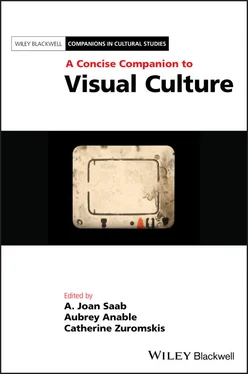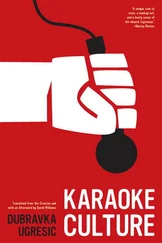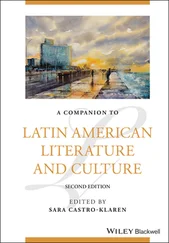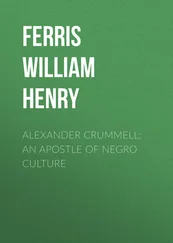Imagine: a last screening, a lone spectator! But this is precisely a paradoxically optimistic and confident fantasy: the end of cinema will be a privileged punctual moment, and maybe you will be its final spectator. What a fascinating mix of anxiety, anticipatory nostalgia, and fantasies of mastering the medium’s extinction. How uncanny that such optimism surges from this bleak story of entropy.
But if this moment seems saturated with a compensatory sense of mastery, we can turn to Douglas Crimp’s elegant and pointed account of his past curatorial and critical project(s). He chooses to end Before Pictures with this reflection on the trajectory of his developing thoughts on the exhibit Pictures , which he curated in 1977 and with which the book opens: “One thing I can say for certain: when I wrote the Pictures catalogue essay, and even more when I rewrote it for October , I was convinced that with sufficient insight a critic could—or even should—determine what was historically significant at a given moment and explain why,” he writes. “That conviction was a result of my intellectual formation as an art historian and aspiring art critic. Moreover, it was possible to believe such a thing then: the art scene as I experienced it in New York from 1967 to 1977 was small enough to seem fully comprehensible. That, of course, no longer holds true” (Crimp 2016, 278).
“And because it is so clearly not true now, ” he continues, “it seems unlikely that it could really have been true then. In the meantime, coming to the understanding that my knowledge of art can never be anything but partial has been liberating. It has allowed me to write about what attracts me, challenges me, or simply gives me pleasure without having to make a grand historical claim for it.” Crimp continues, concluding his book with this observation: “No doubt that is why I respond to the reception of Pictures with ambivalence. It historicizes me” (278). Ending in process, inside the shifting perspectives or frames evoked by “historicization,” Crimp gracefully closes a narrative that maps a memoir onto a survey of beloved objects of study, even as it tracks the shifting relations between the critic and the work, and the mutating art world of New York City during the period that this book captures and frames. One finds no sense of mastery here, but rather an abiding respect for the work of reframing.
In the second volume of his magisterial trilogy on the “ends” of film theory, D. N. Rodowick inscribes mourning in the book’s title itself: Elegy for Theory . He devotes the final chapter to the question of “becoming a subject in theory,” which builds to a critical–aggressive conclusion that announces his confidence about a certain theory’s future, a certain future of theory. An account of the volatility that marks the evolution of theory across the 1980s and 1990s and into the next century, this 2014 text spends considerable time in its very last chapter anxiously confronting the relationship of theory to its subjects—the subjects in and of it—instead of its objects. Rodowick maps the shifts that have reshaped film theory: he maps them as unstable boundaries that attempt to mark off “film studies” from “media studies” and “cultural studies” (scare quotes here signal the anxious nature of any claim to delimit these categories).
“In a process happening across all media,” Rodowick (2014, 257) argues, “the rise of media studies and new critical interest in popular television, video art, and electronic media produced a situation where the object of film theory gave way to a new concern with visual studies and the multiplication of screen cultures driven by the demands of multinational capitalism and proliferating simultaneously on global and capillary scales” (257). Importantly, however, this movement intersects with developments in cultural studies, which “had created a new conception of a class or collective subject of mass culture, attentive to the differential contexts of reading and readership, that overturned or reversed logics of apparatus theory and the subject in process,” producing “readers rather than spectators” (257).
At the same time, he argues, “the steadily rising arc of cultural studies in film and media studies could also be mapped against a decline or displacement of psychoanalysis,” which is “especially apparent in the history of feminist film theory” (258). Looking back at this moment, he finds that feminist film theory, in particular, presents an apparent contradiction—even an internal rupture—at a pivotal point that displaces “a conceptual framework … committed to psychoanalysis, the unconscious, subjective difference, and the transgressive force of desire and the drives.” “In retrospect,” he contends, “one of the most curious features of contemporary theory is how the concept of negation or critique returns continually to the problem of identity” (260). For him, then, the paradox is that the negative force—or aggression—that lines critique in postmodern theoretical projects is displaced and returns to cling stubbornly to bodies, as if seeking to ground itself in the material resistance of the body, and specifically in visible difference.
So, while Rodowick wants to insist that “one of the very great achievements of this age of theory was its deep ethical commitments to political activism and the desire to critique and seek redress for inequality, discrimination, oppression, and injustice,” he identifies a core problem underpinning these achievements: “the tendency to construct a concept of identity as the site of a special epistemological space in relation to ideology or to power” (261). Consequently, he can then go on to argue that the force of negation has somehow been highjacked to the advantage of certain identity positions. Troubling in this account is its apparent suspicion of any theoretical claims to “a special kind of epistemological privilege” that may issue from a social location. Here, I think, his argument conflates the body and its visible aspects with “situated knowledge.”
It seems to me that this last conflation (or rather collapse) names an ongoing issue in our most pressing efforts to define, delineate, shape, or stabilize and frame our object of study and its critique. And I hear in Rodowick’s retrospection a real interest in tracking the ways in which our critical relationship to aesthetic objects—whether in the form of competing theoretical claims or in the form of the institutions that frame theses objects—has come to be energized as much by pleasure, aesthetic or otherwise, as by aggression. That is, negative charges have moved around a lot as, collectively, we seem to have retreated from our more aggressive—even assaultive—theoretical positions in order to leave room for appreciation, to seek out and court surprise.
Yet something is clearly left over, remaining unmanageable as epistemological privilege brushes against, but does not coincide with, what we might still call “the burden of representation.” In identity, what Rodowick sees as “epistemological” or ideological privilege can look that way only if one believes that I possess or inhabit identity more than it possesses or inhabits me. If I cannot own it (and I cannot), then I must remain mindful of the “burdens” that come with the representations I nonetheless struggle to claim.
As I approached this essay’s conclusion, I came across a searing account of our current state “not of post‐racialism, but of unabashed racialism”: “Injustice on Repeat,” in a Sunday book review section of the New York Times (Alexander 2020). Michelle Alexander, who is a civil rights lawyer, a legal scholar, and the author of The New Jim Crow: Mass Incarceration in the Age of Colorblindness , asserts there: “It has been an astonishing decade. Everything has changed and nothing has changed.” “White people are generally allowed to have problems,” she writes. “But people of color … are regularly viewed and treated as the problem ” (6, emphasis mine). “White nationalism, at its core, reflects a belief that our nation’s problems would be solved if only people of color could somehow be gotten rid of, or at least better controlled,” Alexander writes. “In short,” she asserts, “mass incarceration and mass deportation have less to do with crime and immigration than the ways we’ve chosen to respond to those issues when black and brown people are framed as the problem” (6–7). Identity frames us: we may need to foreground this framing in visual culture and visual studies alike, as the being–having dichotomy forces us back to embodiment.
Читать дальше












